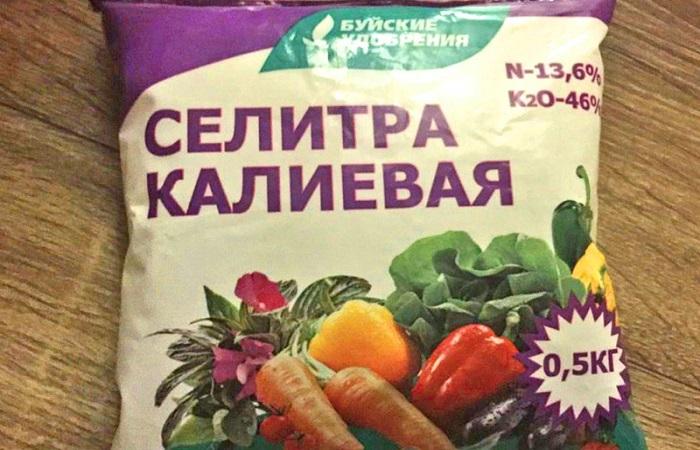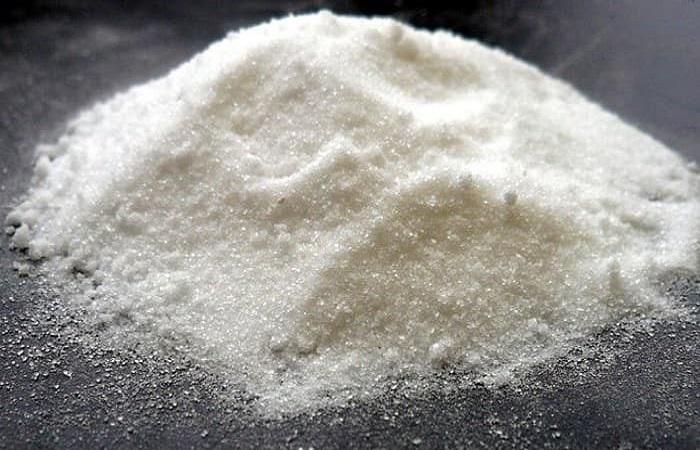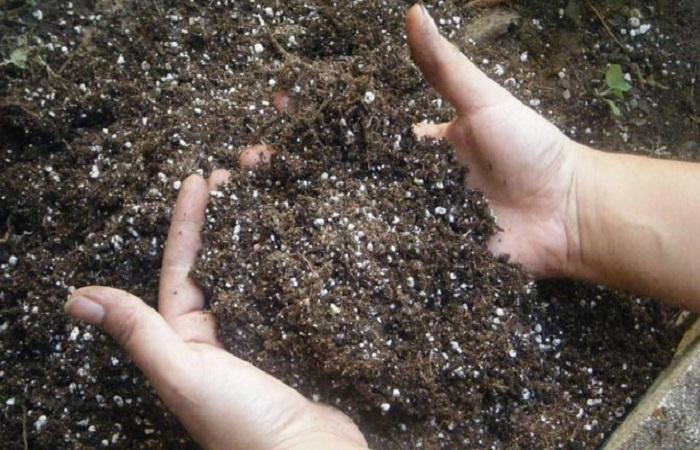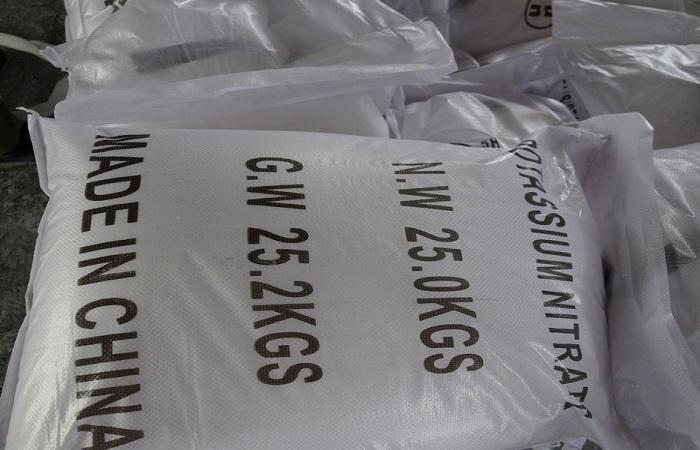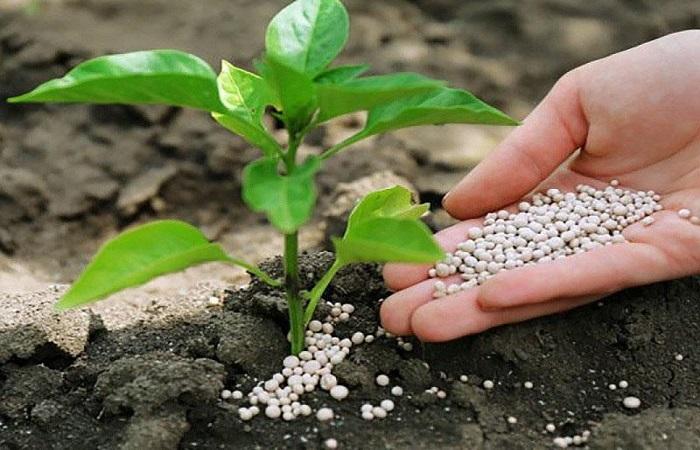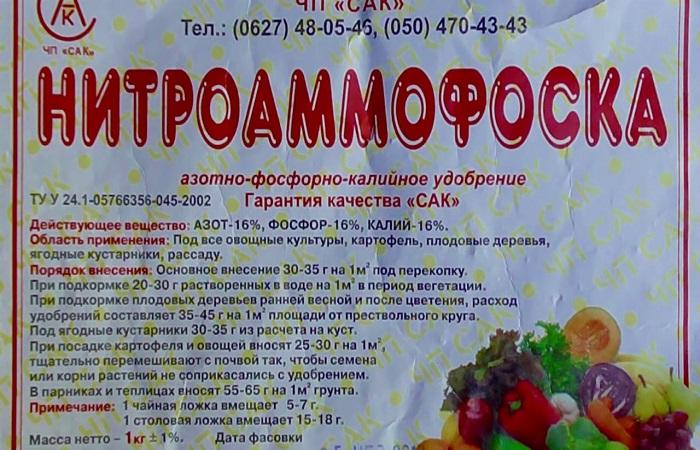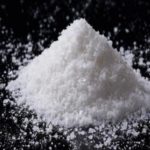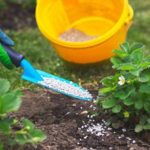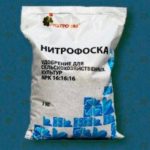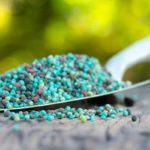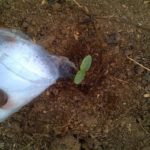Nitrate, which is used as fertilizer, is not only ammonium nitrate. Let's consider the composition, description and effect of potassium nitrate, its properties, when to use it for vegetable garden plants. What precautions should be taken, the advantages and disadvantages of saltpeter, its compatibility with other drugs and fertilizers, what can replace it.
What is it, composition and principle of action
Potassium nitrate has other names, for example, it is known as potassium nitrate, potassium nitrate.Previously, the mineral was mined in India, where there were deposits of it, which is why it is also called Indian saltpeter. The chemical formula of the substance is KNO3, molar mass is 101.1 g/mol. It contains 13-13.5% nitrogen, 36-38.2% potassium, and 0.9-1.3% phosphorus.
Saltpeter is a white crystalline substance, colorless and odorless. Crystals dissolve well in water, especially in warm water. At a temperature of 20 °C, 31.5 g of nitrate dissolves in 100 g of water, at 40 °C - 63.9 g, at 60 °C - 109.9 g.
In the soil, saltpeter interacts with the soil solution and the absorbing complex. Potassium cations and nitric acid anions interact with it, their effect is the same as that of simple 1-component fertilizers.
It nourishes plants, stimulating the growth of roots and aerial parts, and improves photosynthesis. Plants become more resistant to negative factors such as temperature changes and drought. Healthy plants produce strong fruits that store better. This is especially true for winter varieties, the fruits of which need to be stored for a long time. Berries and fruits are made sweet and aromatic.
Potassium nitrate is a well-known fertilizer that has been actively used by gardeners and gardeners for decades. It is estimated that after its application at the end of the season, it is possible to increase the yield by a quarter compared to when the plants were grown without fertilizing. This fertilizer is excellent for feeding fruit and vegetable crops that many gardeners grow on their plots - cucumbers, beets, carrots, tomatoes.
It is recommended to choose potassium nitrate as a top dressing for ornamental plants and flowers grown on window sills or in street flower beds.Potassium enhances flowering and makes plants lush, nitrogen promotes the growth of green mass.
In what cases is it indicated?
The main application of nitrate is done in April, pre-sowing - in May, fertilizing - in June-August. Fertilizer can be applied to all types of soil, but in an amount that depends on the initial nitrogen and potassium content, as well as the climate and soil conditions of the area.
In horticulture and vegetable growing, potassium nitrate is used to fertilize the roots and leaves of all crops throughout the entire growing season.
The need for potassium varies among crops. Forage crops, beets and potatoes are especially in need of it. But many plants require more potassium than is found in the soil. From mineral fertilizers, including potassium nitrate, it is absorbed by approximately 80%. The level of need also depends on factors that affect plants while they are developing - from lighting, temperature, humidity, lightness and looseness of the soil, and its saturation with other elements.
When and how to use potassium nitrate for the garden
Fertilizer can be applied in the form of a powder, but since the substance is highly soluble, saltpeter is used in the form of a solution for watering plants. Its use is simple: dilute 20 g in 10 liters of water and water the beds 1-2 times a month. For flowers and foliar feeding, prepare a solution of 10 g per 10 liters. Irrigate plants using a conventional sprayer.
Security measures
Potassium nitrate is non-toxic if used in acceptable dosage. In case of an overdose, the nitrate content in the fruit increases; to prevent this from happening, garden plants should be fed no more than 3-4 times per season.
When working with saltpeter, you need to wear thick clothing so that it covers all parts of the body. You should wear gloves, goggles and a respirator to prevent the powder from getting on your skin or nose. Do not use metal buckets or other containers to dilute the solution. If possible, do not work in the heat so that the saltpeter does not heat up.
Storage conditions and shelf life
Potassium nitrate should be stored in airtight packaging, not stored near household products, heat sources, or fertilizers. Packages containing potassium nitrate should not be exposed to sunlight. The warehouse must be dry and ventilated.
The fertilizer cannot be stored at temperatures above 30 °C; under such conditions, decomposition occurs and the powder crystals cake into a solid mass. Caking is also observed if the powder is stored in a damp room and absorbs moisture. If there are a large number of packages, they can be stacked in a layer no higher than 2 m.
Advantages and disadvantages
Benefits of using potassium nitrate in the garden:
- adds nitrogen and potassium to the soil;
- stimulates the growth of roots and stems;
- improves plant resistance to temperature changes and drought;
- stimulates photosynthesis;
- improves the appearance and quality of fruits;
- increases the volume of harvested crops, extends the shelf life of vegetables and fruits, herbs and berries.
Cons: acidifies the soil, so it is not applied to acidic soils.It does not contain microelements and is quickly washed out into the lower layers of the soil.
Compatibility
You can combine potassium nitrate with other chemical and lime fertilizers, but not with organic ones. Add organic matter, manure, straw, peat and ash separately after some time.
When using potassium nitrate and another fertilizer together, you need to monitor how much of which element will be added to the soil so that there is no overdose and the plants are not overfed.
Analogues of the product
You can replace potassium nitrate with any potassium fertilizer, for example, potassium sulfate. Nitrogen and potassium are present in nitroammophoska. The agricultural industry produces complex fertilizers with these elements, as well as with microelements: “NPK Standard”, potassium nitrate of the “Multi” brand with microelements.
Potassium nitrate is used to fertilize garden and garden plants with potassium and nitrogen. This is a simple 2-component fertilizer that can be applied to the soil in autumn, spring, and throughout the growing season. Can be used both in greenhouses and in beds. The fertilizer combines 2 elements - potassium has a positive effect on flowering and fruit formation, nitrogen - on the above-ground mass, making it lush and healthy. Therefore, saltpeter can be considered an ideal remedy if it is necessary to stimulate the growth of plants in the garden, their flowering and fruiting.

